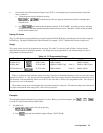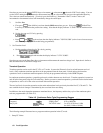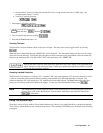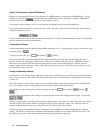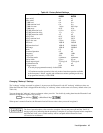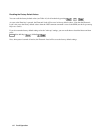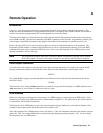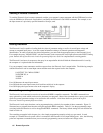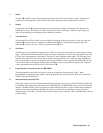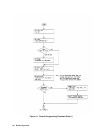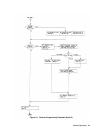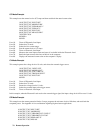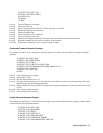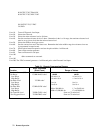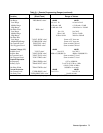Remote Operation 67
1. Modes
The CC, CR, and CV values can be programmed whether or not the associated mode is active. If the input is
turned on, all of the applicable values will take effect at the input when the associated mode is selected.
2. Ranges
Changing the CC or CR programming range can cause the present settings to be automatically adjusted to fit
within the new range. See Setting CC Values and Setting CR Values in Chapter 4. During a range change, the
input will go through a non-conducting state to minimize overshoots.
3. Transient levels
The transient CC or CV level must be set to a higher level than the respective main level. In the low range, the
transient CR level must be set to a higher level than the main CR level. In the middle and high ranges, the
transient CR level must be set to a lower level than the main CR level.
4. Slew Rates
The CC slew rate is programmed in amps/second. There are 12-steps for each of the two current ranges (low and
high). The Electronic Load automatically selects one of the 12 steps that is closest to the programmed value. The
CV slew rate is programmed in volts/second. There are 12-steps within the voltage range. The Electronic Load
automatically selects one of the 12 steps that is closest to the programmed value. In the low range, the CR slew
rate is programmed in volts/second instead of ohms/second. Whatever value is programmed for the CV slew rate
is also used for CR. In the middle and high ranges, the CR slew rate is programmed in amps/second. Whatever
value is programmed for the CC slew rate is also used for CR.
5. Programmable Current Protection (CURR:PROT)
The programmable current limit is in effect for any mode of operation (not just the CC mode). When
programmable current protection is enabled, and the programmed current limit and time delay are exceeded, the
module’s input will be turned off.
6. Measurement Overload (OVLD)
If the input voltage exceeds the maximum measurement capability of the load, an overload (OVLD) condition will
be indicated in the return values that resulted from a MEAS:VOLT? or MEAS:POW? query sent to the associated
channel. The MEAS:POW? query will return an overload indication if either voltage or current has exceeded the
module’s maximum measurement capability since power is calculated from voltage and current. Overload is
indicated by the value 9.9E + 37 instead of the normal voltage or power readings. This is the IEEE 488.2 value for
positive infinity.



